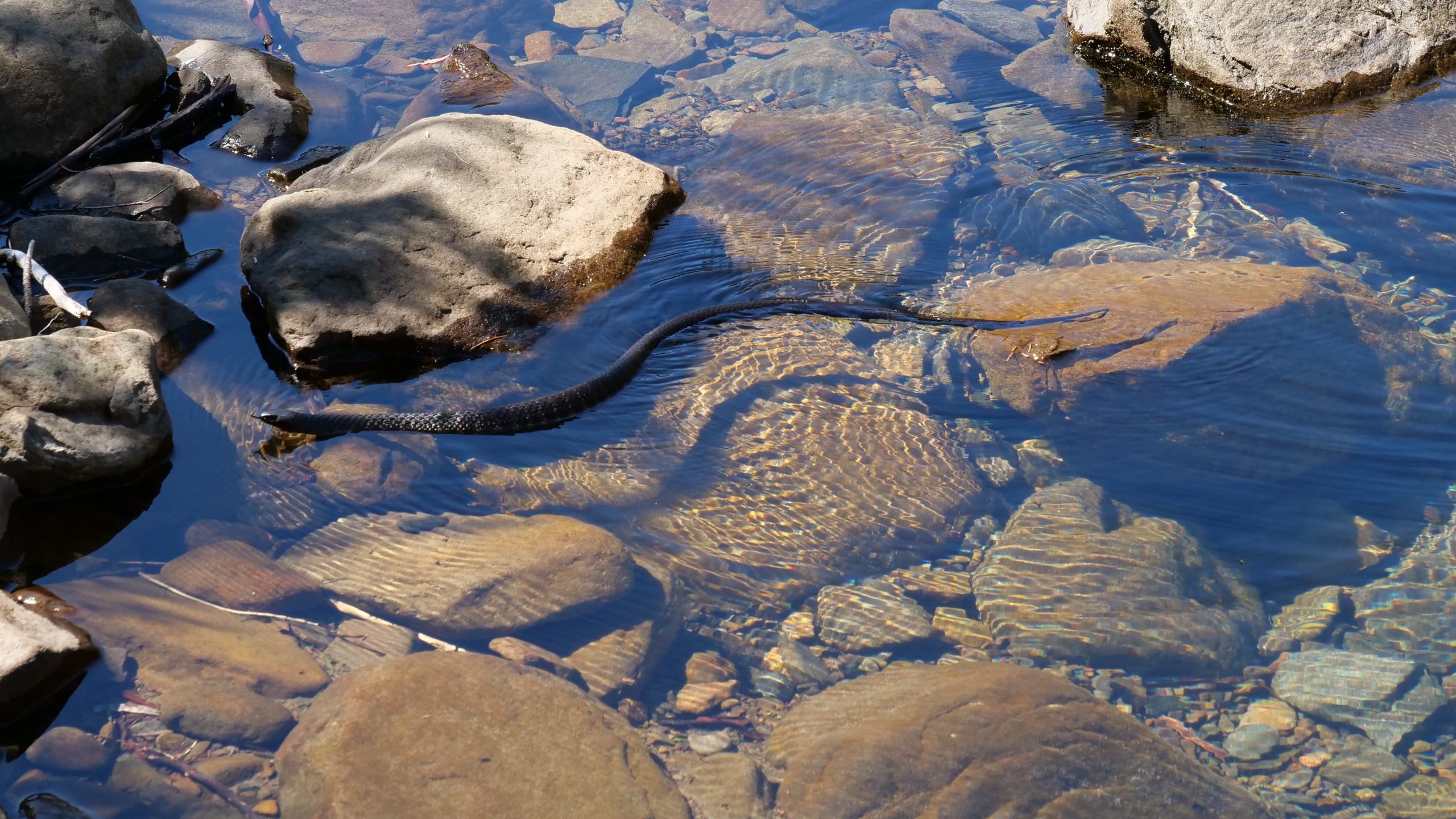The tiger snake moves
Like slow lightning. Like
A yard of creek water
The superb imagery above is the beginning of a poem by Australian poet David Campbell (1915-1979)
TEMPORARY NOTE (I HOPE)
Something has gone wonk with formatting. I hope this is a transient WordPress glitch. Nothing I do manages to persuade it to space correctly. After some hours of fruitless gnashing of teeth, I’ve opted to publish now, even though I am currently unable to fix the ugly, cramped formatting. Something is just overriding the formatting instructions and squishing together most lines….
Click this to read all of Campbell’s Snake.
In the middle of the day on 7 March 2018 my beloved and I were walking around the shores of a popular local swimming spot in the Douglas-Apsley National Park, a little north of the eastern Tasmanian coastal town of Bicheno.
At the key moment we were the only humans directly beside the Apsley River Waterhole, so we (and the snake) were privileged to enjoy a quiet, untroubled experience.
There are few lovelier sights – and surely, no more exquisite form of locomotion – than a snake, swimming.
(photo is copyright Doug Spencer. An earlier post has a different photo of this same individual, when he/she was a little further from “our” side of the waterhole. I’ve just noticed that Apple-knows-best had auto-“corrected” the National Park’s name to give it a more reptilian flavour….and yes, I will one day keep that post’s promise. The tiger snake was not the Park’s only attraction)
D. H. Lawrence wrote my favourite snake poem.
His Snake – written from direct experience, in Taormina, Sicily, in 1923 – is a beautifully considered meditation on how humans “see” snakes.
And voices in me said, If you were a man
You would take a stick and break him now, and finish him off.
But must I confess how I liked him,
Click here to read the full poem.
This post’s musical companion is not about a snake, but….
Australia has several rivers that are Serpentine by name, but pianist and composer Alister Spence’s Serpentine was inspired by the appearance of the Tweed River in northern New South Wales, when Alister viewed it from an aircraft.
This very beautiful composition/performance is on Less Stable Elements, the 1996 album by Clarion Fracture Zone; the quintet’s other members were Sandy Evans, Tony Gorman, Lloyd Swanton and Toby Hall (respectively, here, playing soprano & tenor saxes, alto sax, double bass and drums/percussion)
Click here to hear the piece…then, I hope, buy the album!
Its musicians are all currently income-afflicted, courtesy of the pandemic.

I am so enjoying these posts Doug.
Thank you for the time you take with the links too: followed the poems and snakes a long way.
And also when you share the music.